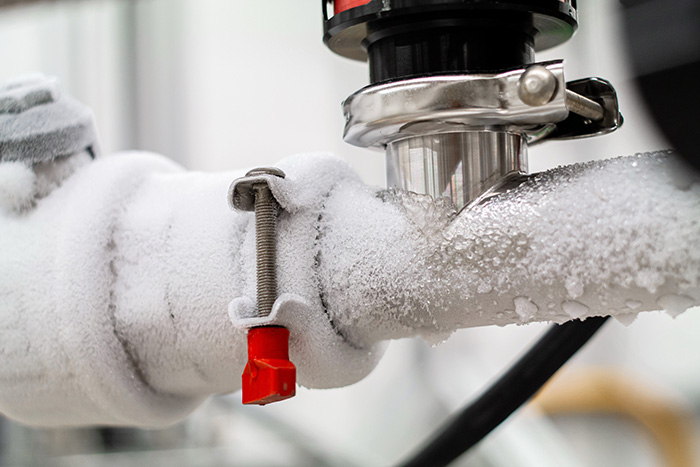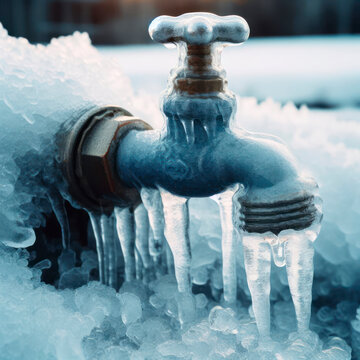Protecting Against Frozen Pipes: Effective Tips for Winter
Protecting Against Frozen Pipes: Effective Tips for Winter
Blog Article
We've unearthed this article about Preventing and dealing with frozen pipes down the page on the web and reckoned it made good sense to discuss it with you on this site.

Winter can ruin your plumbing, particularly by freezing pipelines. Right here's exactly how to avoid it from happening and what to do if it does.
Introduction
As temperatures decrease, the threat of frozen pipelines boosts, possibly leading to expensive repair services and water damage. Recognizing how to avoid frozen pipes is important for house owners in chilly environments.
Recognizing Frozen Pipelines
What triggers pipes to freeze?
Pipes ice up when revealed to temperature levels below 32 ° F (0 ° C) for extended periods. As water inside the pipes ices up, it increases, taxing the pipeline wall surfaces and potentially triggering them to rupture.
Dangers and damages
Icy pipes can result in supply of water disruptions, residential or commercial property damages, and pricey repairs. Burst pipes can flood homes and trigger substantial structural damage.
Signs of Frozen Pipes
Determining frozen pipes early can avoid them from bursting.
Just how to recognize icy pipelines
Search for lowered water circulation from taps, uncommon smells or noises from pipelines, and noticeable frost on subjected pipes.
Avoidance Tips
Insulating vulnerable pipes
Cover pipelines in insulation sleeves or use heat tape to protect them from freezing temperature levels. Focus on pipes in unheated or exterior areas of the home.
Home heating strategies
Keep interior areas properly heated up, particularly areas with pipes. Open up cupboard doors to permit cozy air to distribute around pipes under sinks.
Shielding Exterior Pipes
Garden hose pipes and outdoor faucets
Disconnect and drain pipes garden tubes prior to winter season. Install frost-proof faucets or cover outside taps with insulated caps.
What to Do If Your Pipes Freeze
Immediate activities to take
If you suspect frozen pipes, keep taps open to soothe stress as the ice melts. Use a hairdryer or towels taken in warm water to thaw pipelines gradually.
Long-Term Solutions
Architectural modifications
Think about rerouting pipes far from outside wall surfaces or unheated locations. Add added insulation to attic rooms, basements, and crawl spaces.
Upgrading insulation
Purchase high-quality insulation for pipes, attic rooms, and walls. Correct insulation aids keep regular temperatures and decreases the risk of frozen pipes.
Final thought
Stopping frozen pipes calls for positive steps and quick reactions. By comprehending the causes, indicators, and safety nets, house owners can secure their pipes during cold weather.
5 Ways to Prevent Frozen Pipes
Drain Outdoor Faucets and Disconnect Hoses
First, close the shut-off valve that controls the flow of water in the pipe to your outdoor faucet. Then, head outside to disconnect and drain your hose and open the outdoor faucet to allow the water to completely drain out of the line. Turn off the faucet when done. Finally, head back to the shut-off valve and drain the remaining water inside the pipe into a bucket or container. Additionally, if you have a home irrigation system, you should consider hiring an expert to clear the system of water each year.
Insulate Pipes
One of the best and most cost-effective methods for preventing frozen water pipes is to wrap your pipes with insulation. This is especially important for areas in your home that aren’t exposed to heat, such as an attic. We suggest using foam sleeves, which can typically be found at your local hardware store.
Keep Heat Running at 65
Your pipes are located inside your walls, and the temperature there is much colder than the rest of the house. To prevent your pipes from freezing, The Insurance Information Institute suggests that you keep your home heated to at least 65 degrees, even when traveling. You may want to invest in smart devices that can keep an eye on the temperature in your home while you’re away.
Leave Water Dripping
Moving water — even a small trickle — can prevent ice from forming inside your pipes. When freezing temps are imminent, start a drip of water from all faucets that serve exposed pipes. Leaving a few faucets running will also help relieve pressure inside the pipes and help prevent a rupture if the water inside freezes.
Open Cupboard Doors
Warm your kitchen and bathroom pipes by opening cupboards and vanities. You should also leave your interior doors ajar to help warm air circulate evenly throughout your home.

As an enthusiastic person who reads on How to prepare your home plumbing for winter weather, I thought sharing that excerpt was a great idea. Sharing is caring. Helping others is fun. Bless you for your time. Revisit us soon.
Schedule Report this page